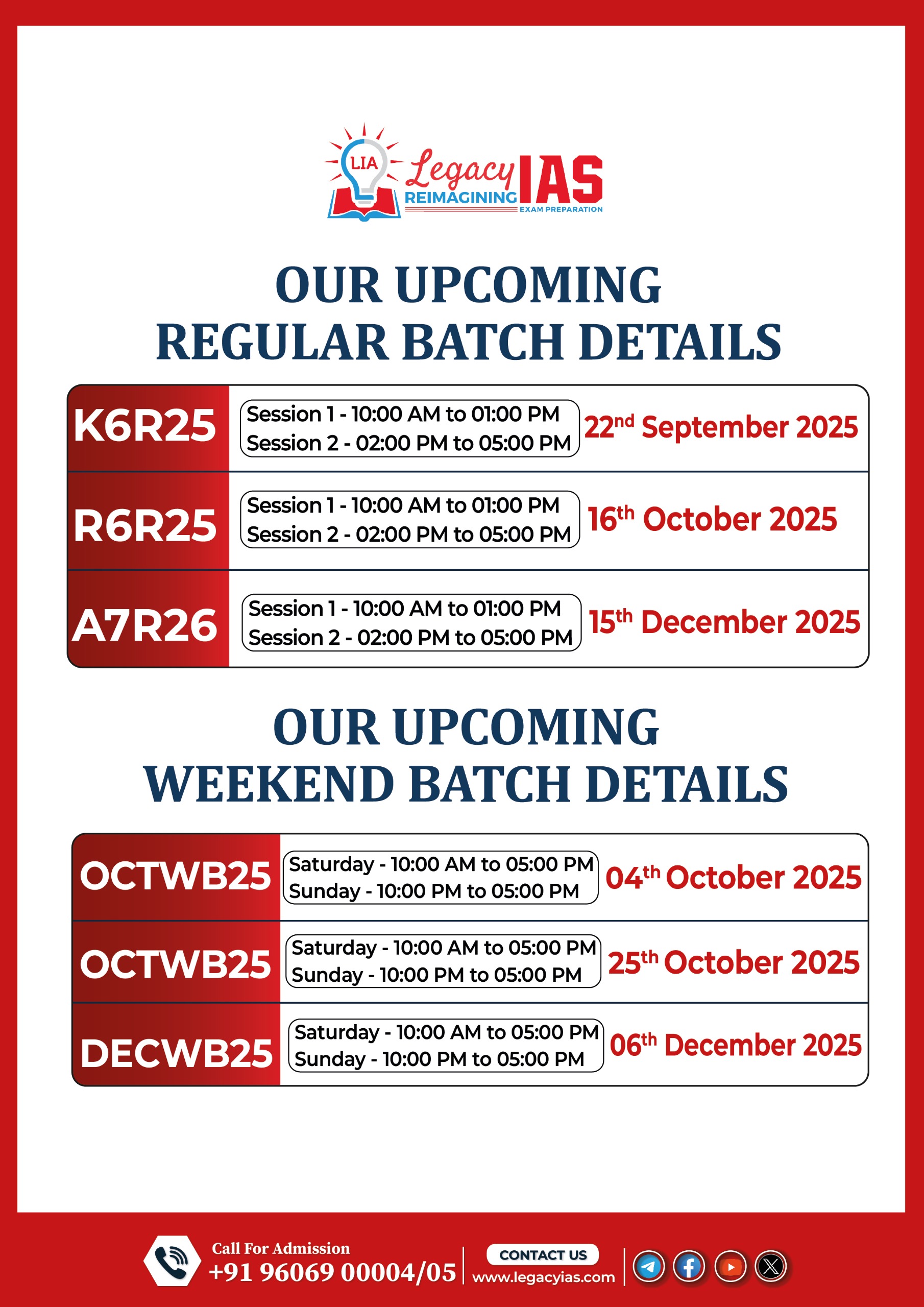CONTENTS
- Onward, sunward
- ‘Indigenous’ fertilisers must be explored
Onward, Sunward
Context:
Approximately one week after ISRO’s triumphant soft landing of a robotic lander and rover on the moon’s southern polar region, it launched India’s first-ever space mission entirely dedicated to the study of the sun. This mission is represented by a spacecraft named AdityaL1.
Relevance:
GS3-Space Technology
Mains Question:
ISRO recently launched the Aditya L1 mission, India’s first dedicated spacecraft mission to study the Sun. Highlight the significance of this mission and the various challenges in studying the sun.(15 marks, 250 words).
About Aditya L1:
- The successful landing of the lunar rover signifies a phase where ISRO’s continuous progress is almost inseparable from its global leadership in space exploration.
- Aditya L1 continues a time-honored tradition of solar investigation, as demonstrated by the Kodaikanal Solar Observatory (KoSO), which has been observing the Sun for over a century, capturing sunspot images and documenting solar behavior changes.
- Aditya L1 was launched using the Polar Satellite Launch Vehicle-C57 (PSLV) C-57 and carries seven payloads (instruments), including
- VELC,Solar Ultraviolet Imaging Telescope (SUIT),Solar Low Energy X-ray Spectrometer (SoLEXS),Aditya Solar wind Particle Experiment (ASPEX),High Energy L1 Orbiting X-ray Spectrometer (HEL1OS),Plasma Analyser Package for Aditya (PAPA), and
- The objective is for AdityaL1 to travel to the L1 Lagrange point, located 1.5 million kilometers from Earth, where it will maintain an unobstructed view of the Sun while orbiting around this point.
- Lagrange Point 1 is one of five positions in the Earth-Sun system’s orbital plane that utilize gravitational forces to reduce fuel consumption for spacecraft. Placing a satellite in a halo orbit around L1 ensures continuous solar observation without any interruptions or eclipses.
- To enhance its relevance, AdityaL1 must swiftly record and transmit data to Earth. The data downlink and analysis process must also operate promptly so that scientists can compile a concurrent image of the Sun.
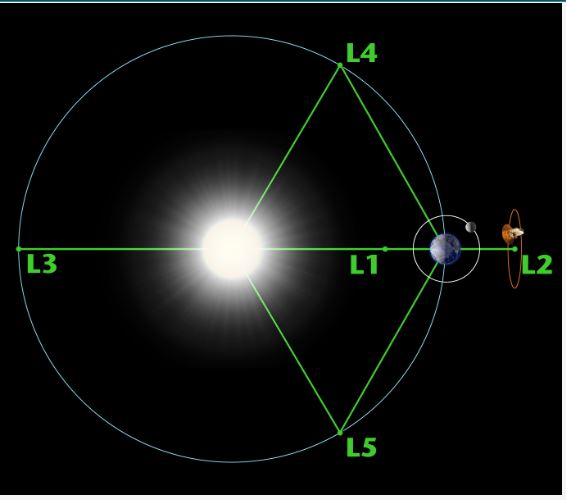
Challenges in studying the sun:
- Studying the Sun presents challenges, despite its proximity and extensive observation history. Secrets of the solar wind, a stream of charged particles emanating from the Sun into space, remain undiscovered, and AdityaL1’s findings could impact future space missions.
- Other mysteries, like the coronal heating problem (why the Sun’s uppermost atmosphere is much hotter than its surface), persist and challenge scientific theories.
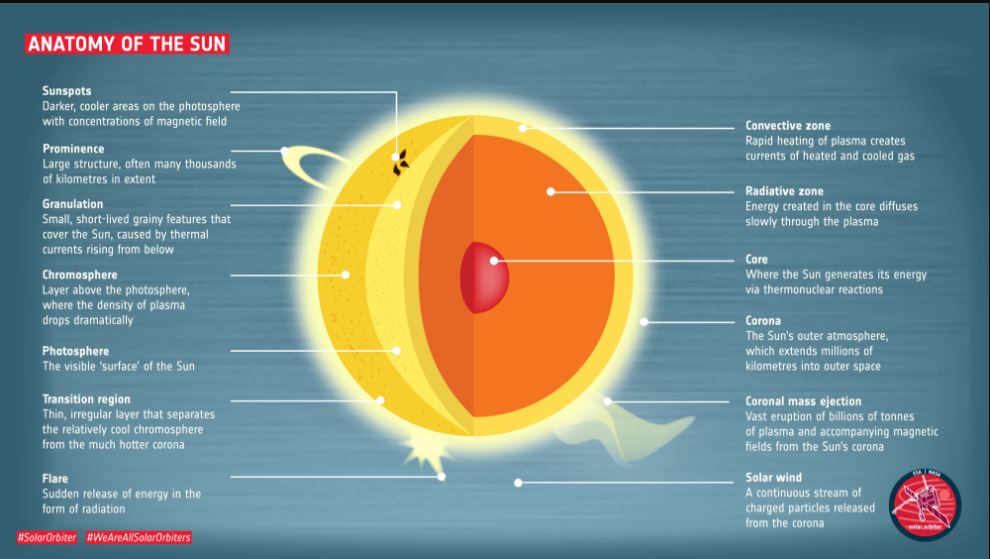
Conclusion:
ISRO has proven its capability to handle intricate navigational tasks in interplanetary missions, such as Chandrayaan in the lunar space program, often with the assistance of foreign space agencies. These skills will also play a role in the AdityaL1 mission. In conclusion, despite its apparent simplicity compared to ISRO’s recent achievements, AdityaL1 represents another boundary to push for the Indian space program and the national solar physics community.
Source-The Hindu
‘Indigenous’ Fertilisers Must be Explored
Context:
The enactment of two laws viz. The Mines and Minerals (Development and Regulation) Amendment Act, 2023 and the Offshore Areas Mineral (Development and Regulation) Amendment Act, 2023 in the just concluded monsoon session of the parliament bodes well for the Indian fertilizer sector. While the first law paves the way for the auction of critical mineral potash (besides lithium and graphite) blocks for exploration and processing in India, the second provides a fixed 50-year production lease for offshore minerals.
Relevance:
GS3-Direct and Indirect farm subsidies, Agricultural resources, Mobilisation of resources
Mains Question:
Discuss the issues related to India’s fertiliser policy. Also suggest the way forward for attainment of self-sufficiency in fertiliser sector in India. (10 marks, 150 words)
Flaws in our fertiliser policy:
- Rising import bills:
- Potash, commonly referred to as ‘K,’ is one of the essential nutrients required for enhancing the production of food crops alongside Nitrogen (‘N’) and Phosphate (‘P’).
- India relies entirely on imports to meet its potash requirements, primarily sourcing it from countries like Belarus, Canada, Russia, Israel, and Jordan, as it lacks domestic resources. This is largely a result of historical neglect in promoting indigenous exploration initiatives by our policymakers.
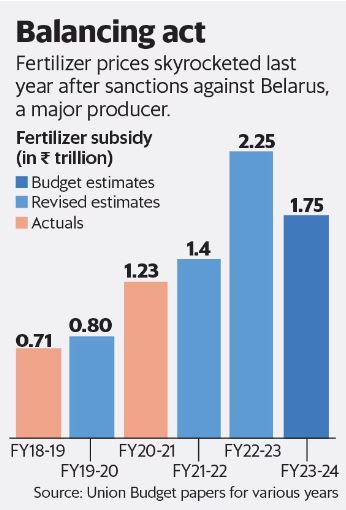
- Ruling parties have pledged to provide all types of fertilizers at a low maximum retail price (MRP), which often does not align with the higher production and distribution costs.
- Manufacturers or importers are reluctant to supply fertilisers at lower costs or losses. As a result, the government compensates them through subsidies to cover the cost excess. This has resulted in a significant increase in the fertilizer subsidy expenditure, which reached a staggering Rs 2,55,000 crore during 2022-23.
- The primary factor driving this increase is the rising costs, with a substantial portion of it attributed to the substantial import bills. In fact, during 2021-22, the total value of fertilizer imports by India, including inputs for domestic production, amounted to US$24.3 billion, which is around Rs 200,000 crore.
- Farmers are aware that they will continue to receive fertilizers at a low cost, so they have little incentive to improve usage efficiency.
- Manufacturers and importers are aware that any cost difference in supplying fertilizers over the price paid by farmers will be reimbursed as a subsidy, so they are not concerned about incurring higher expenses.
- Moreover, global suppliers understand that they can charge higher prices without facing demand resistance since the Union Government covers the costs.
- When the government is willing to pay any price for imports, no matter how high, thereby shielding both suppliers and farmers from the consequences, there is little incentive for anyone to seek these resources within India.
2. Urea-favouritism:
- Before the major economic crisis that gripped India in 1991, all types of fertilizers, except urea were subsidized in a similar manner. In 1991, when India sought assistance from the IMF/World Bank, these international institutions insisted on phasing out fertilizer subsidies within three years as part of the reform conditions.
- The government at the time, eliminated subsidies on ‘P’ and ‘K’ fertilizers (referred to as non-urea fertilizers) while retaining control and subsidies on urea.
- However, just a little over a month later, subsidies were reinstated for non-urea fertilizers. Under this new system, all suppliers of non-urea fertilizers received a uniform subsidy, while urea subsidies continued to be specific to each manufacturer.
- Today, all types of fertilizers receive subsidies. Urea, due to government control, remains popular among political leaders, while non-urea fertilizers often face challenges, partly due to their deregulated status since 1992.
- Unlike urea, where increasing subsidies help maintain the maximum retail price (MRP) despite cost increases, the government generally does not adjust subsidies for non-urea fertilizers. This results in higher prices for non-urea fertilizers as their production costs rise.
- Combined with the preferential treatment urea receives in other aspects (such as full freight cost reimbursement up to the retail point, unlike non-urea fertilizers that only receive reimbursement up to the rail-head), this has created an imbalance in fertilizer usage. There is excessive use of ‘N’ compared to ‘P’ and ‘K,’ with the current NPK usage ratio at 6.7:2.4:1, favoring ‘N,’ whereas the desired ratio is 4:2:1. This imbalance has led to reduced crop yields, soil degradation, and negative environmental impacts.
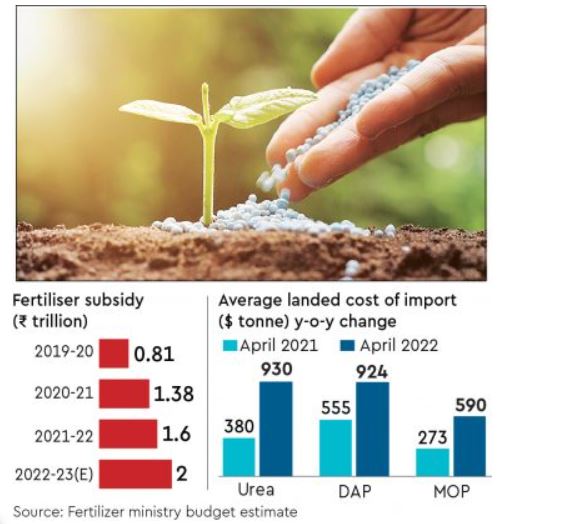
Conclusion:
These laws can attract investments, including from global fertilizer industry leaders, in potash extraction and processing in Rajasthan, where there are also opportunities for rock phosphate, a vital ingredient for the ‘P’ nutrient. India heavily relies on imports, up to 80-90 percent, for rock phosphate. Exploring resources beneath the seabed is also an option. To reduce import vulnerability, the government should actively seek domestic fertilizer raw material sources for supply diversification. Moreover, reforming the fertilizer ecosystem by removing controls, giving pricing autonomy to suppliers, and directly subsidizing farmers is essential. Funds saved by reducing misuse can be redirected as incentives for mining companies.


